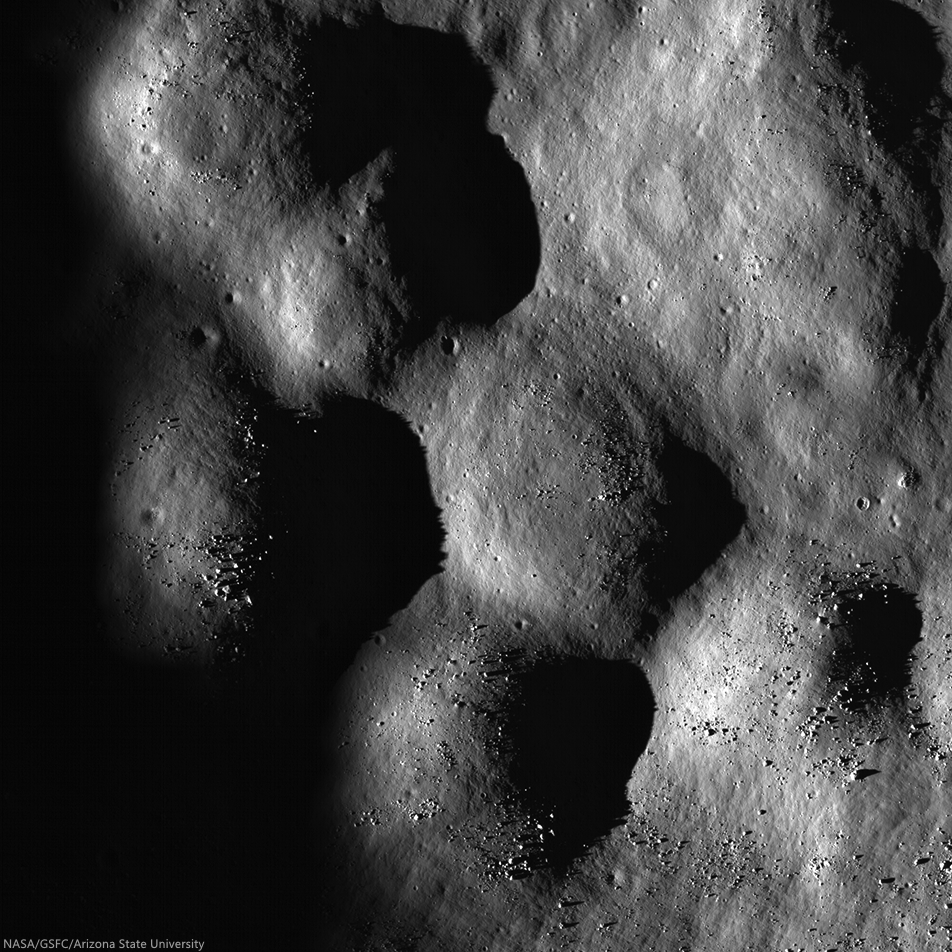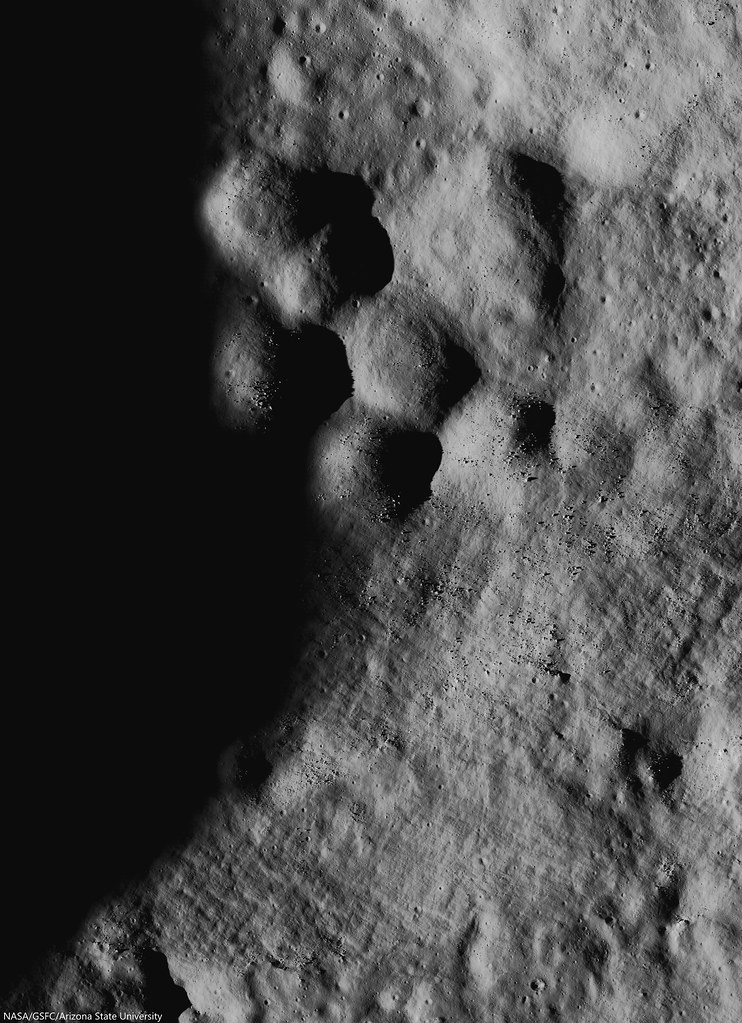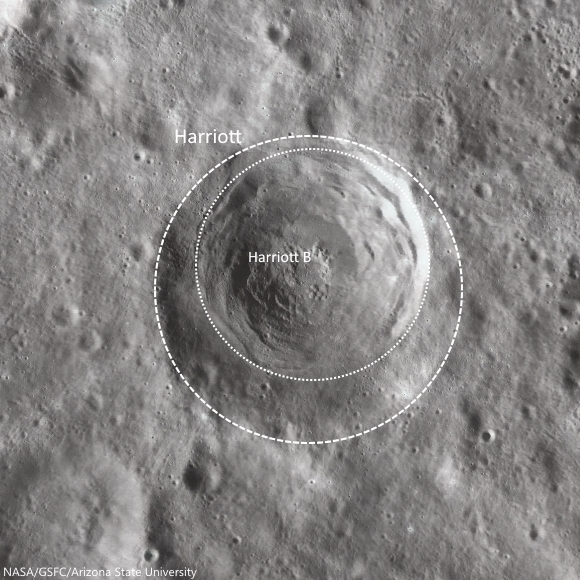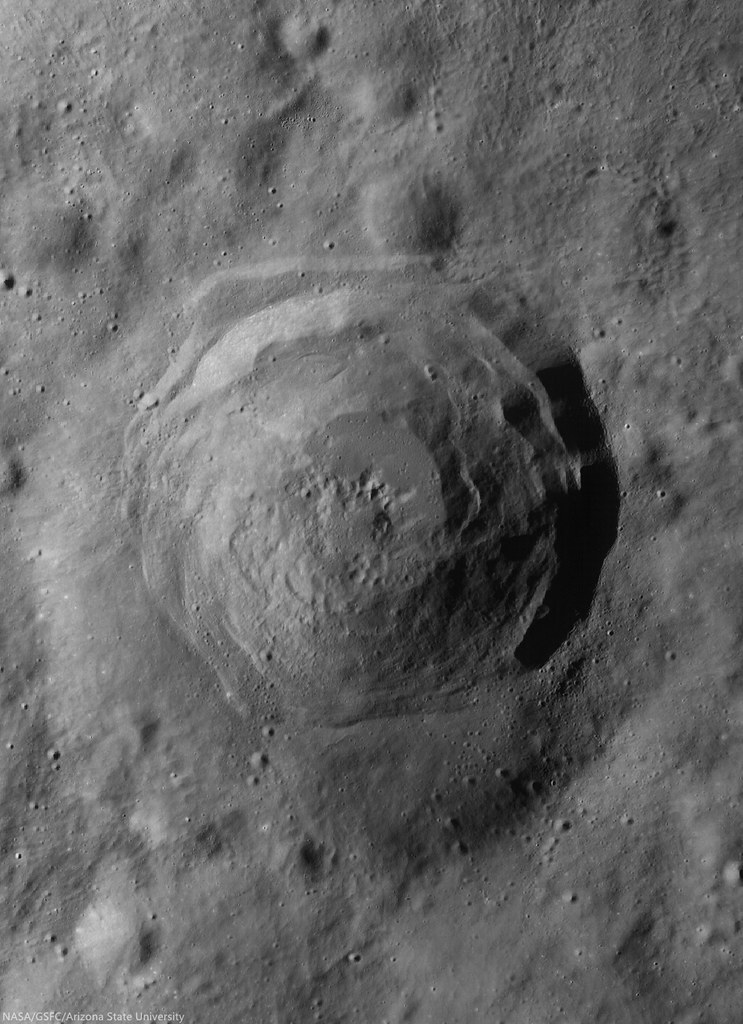 |
| Some among kilometer-sized mounds on the floor of Harriot B (38.1 km; 33.356°N, 114.41°E), in the farside highlands. LROC NAC observation M180430508R, LRO orbit 11710, January 5, 2012; 78.76° incidence angle, resolution 1.57 meters from 159.56 km over 33.77°N, 114.38°E [NASA/GSFC/Arizona State University]. |
LROC News System
The planets in the Solar System are continuously bombarded by space rocks. This violent process early on formed the planets by accretion, and impacts still shape the surface of terrestrial and icy bodies today.
Since the Moon lacks an atmosphere it preserves the impact history record of the inner Solar System. However, this record is less than complete; volcanic resurfacing and crater saturation of the surface erase part of the record. Ancient volcanic activity, resulted in massive outpourings of lava over parts of the Moon, filling in and covering old craters beneath layers of basalt. Crater saturation is a term used by scientists to describe a point after the planetary body has been completely covered with craters of a certain size such that every new crater of that size overlaps an older one, obliterating the evidence of the older craters' existence.
Since the Moon lacks an atmosphere it preserves the impact history record of the inner Solar System. However, this record is less than complete; volcanic resurfacing and crater saturation of the surface erase part of the record. Ancient volcanic activity, resulted in massive outpourings of lava over parts of the Moon, filling in and covering old craters beneath layers of basalt. Crater saturation is a term used by scientists to describe a point after the planetary body has been completely covered with craters of a certain size such that every new crater of that size overlaps an older one, obliterating the evidence of the older craters' existence.
 |
| A full-width view of LROC NAC observation M180430508R [NASA/GSFC/Arizona State University]. |
These mounds are likely weathered central peak formations. Central peaks form by the gravitational collapse of the crater walls which pushes material into the center of the crater and from the rebound of the floor; both of these events occur at the time of crater formation during the modification stage of the crater.
 |
| A more recent, lower incidence angle LROC NAC mosaic of the floor of Harriot B. LROC NAC mosaic M1159343420LR, LRO orbit 22787, July 7, 2014; 59.56° incidence angle, 1.4 meters resolution from 114.29 km over 33.39°N, 114.56°E [NASA/GSFC/Arizona State University].See the larger reproduction HERE. [NASA/GSFC/Arizona State University]. |
crater counts to date planetary surfaces. Once a surface reaches crater saturation, scientists can only estimate a lower bound for how young the surface is.
Related Posts




No comments:
Post a Comment
Welcome, Lunatics!